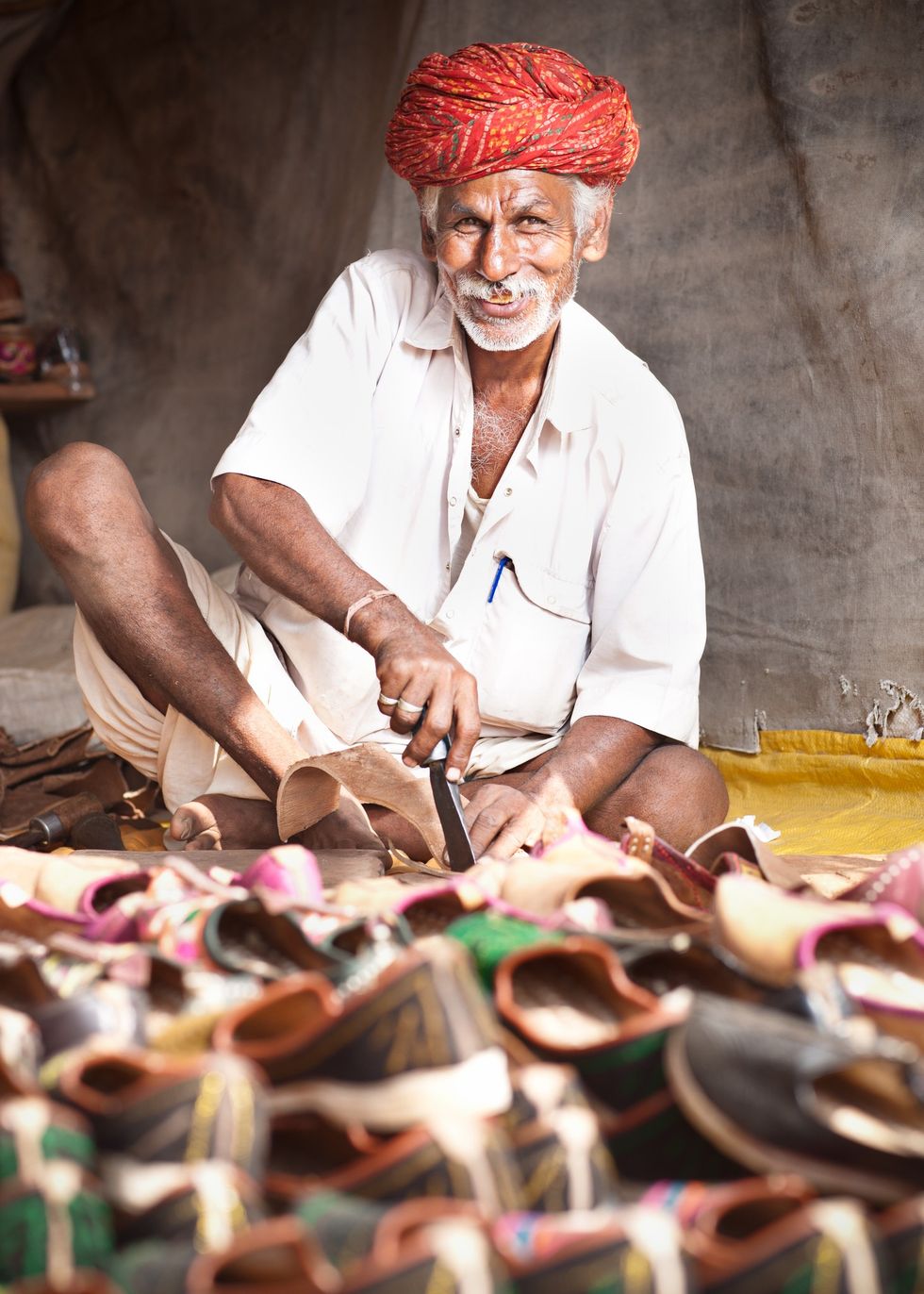HARK1KARAN ON CAPTURING A PERSONAL STORY THROUGH HIS NEW PHOTOGRAPHY BOOK
by ASJAD NAZIR
LONDON born photographer Hark1karan has been a regular visitor to Punjab in India for over 30 years and used the trips to build a closer connection to life there.
Through three dedicated trips he captured 139 artistically shot photographs using 35mm film and published newly released book PIND: Portrait of a Village in Rural Punjab.
The eye-catching book documents everyday life in Hark1Karan’s ancestral village of Bir Kalan in Punjab. With the 192-page self-published labour of love, Hark1karan offers up a fascinating window into village life and an important historical document.
Eastern Eye caught up with Hark1Karan to talk about his limited edition book, photography and his love for the Punjab.
What is it that first connected you to the art of photography?
Growing up, I was surrounded by photographs
and artwork at home. For me, it was normal to see photographs and also to be photographed in my childhood. I guess you can say growing up in a creative household played a big part in my attraction to photography.
What inspired you to put your book PIND: Portrait of a Village in Rural Punjab together?
I always wanted to see a photographic project capturing life in pind, telling our story as Punjabis. I looked for many years to find anyone who had documented Punjabi culture in the form of a photo-book. My search led me to many dead ends or just clichéd and stereotypical photos of Punjab. As a result, I took it upon myself to tell the story as I am lucky enough to still have ties to my pind.
Tell us about the book?
It is a photo-book, so I tell a story using photography. There is a thousand-word introduction by me, which is also translated into Punjabi. I have used 139 images over 192 pages in this hardback book. If you've never been to pind before then this will transport you right there – taking you up close and personal. It is an intimate and emotional story of our people. As much as the photobook ties us back to our roots, it also serves as a historical document while giving a face and voice to those people who are often ignored.
Tell us about your village where the photos were taken?
I guess it’s a typical Punjabi village where life is based around agriculture. Bir Kalan is based in the district of Sangrur and is my mother’s pind. My family link there makes it special for me and I have been visiting the place since the age of one. The book will tell you everything you need to know about my village.
How did you select the photos to be included in the book?
The entire book is shot on 35mm film, which is the old style of photography before everything went digital. This meant my process was a lot slower. I captured the photos over three different trips, but couldn’t see them until they were developed and scanned. From here, I looked to see what story I could tell. Every image is a piece of the puzzle, which is the story of village life. The story tells you what happens in a typical day. So that was a criteria for selecting the images in the book.
Do you have a favourite photo in the book?
My favourite image is of the six children waiting to go to school in the morning. The image reminded me of my childhood and seeing them through my own eyes. The image exudes feelings of joy and happiness. Their perfect smiles beam out their faces. You can’t help but smile and draw the image closer to you.
Is there any one story connected to a photo that means the most to you?
I feel the story as a whole means so much to me, as pind is a reference to our Punjabi culture. As Punjabis, we hold the pind dear to our hearts and can all to some extent trace back our roots there on either side of Punjab.
Who are you hoping will connect with the photo-book?
I hope all Punjabis around the world across different generations can see their story like never before. As much as it will connect with those that have left Punjab, I also want to resonate with those in Punjab, as it is their story more than anyone else.
What do you most love about the Punjab?
I like the spirit of life in pind and the Punjabi people. The love that I feel whenever I go is overwhelming. The familiarity of the culture and sense of home never ever leaves you. Punjab is one half of who I am and the spirit of the people is what makes it such a special place.
Did you learn anything while going on a journey with this book?
My relationship with photography grew stronger as I learnt how to tell a story using different techniques. My bond with Punjab became tighter and I felt I had a responsibility to do this project justice.
What is the secret of capturing a powerful photo?
For me it’s about the awareness of your connection with the subject matter. By that I mean understanding your connection with what you’re capturing and how the photograph will then be presented. Understanding this will allow you to capture a powerful photo.
What inspires you as a photographer?
Telling stories to empower and ones that are often ignored. To use photography as a tool to challenge narratives and create new ones. This keeps me excited to keep photographing.
Why should we pick up this book?
This is the first time Punjab has been documented in such a way and presented beautifully in a hardback photography book. Only a limited run of 600 are available to purchase. I self-published, self-funded and self-distributed the entire project, so you will also be supporting an independent artist, making work for his community. I doubt there will be another press run.
PIND: Portrait of a Village in Rural Punjab by Hark1Karan is out now. Visit www.hark1karan.com, Instagram & Facebook: @hark1karan





 Shefali Jariwala death raises concern over anti ageing drugs and self medication Instagram/shefalijariwala
Shefali Jariwala death raises concern over anti ageing drugs and self medication Instagram/shefalijariwala  Anti ageing pills found at Shefali Jariwala home spark health safety debate Instagram/shefalijariwala
Anti ageing pills found at Shefali Jariwala home spark health safety debate Instagram/shefalijariwala 








 Prada confirms Kolhapuri chappals inspired its 2026 Milan collectionInstagram/
Prada confirms Kolhapuri chappals inspired its 2026 Milan collectionInstagram/ Kolhapuri chappals have been crafted for centuries and received GI tag in 2019 iStock
Kolhapuri chappals have been crafted for centuries and received GI tag in 2019 iStock 
 Wintour also became synonymous with the Met GalaGetty Images
Wintour also became synonymous with the Met GalaGetty Images
